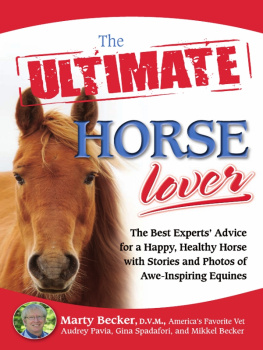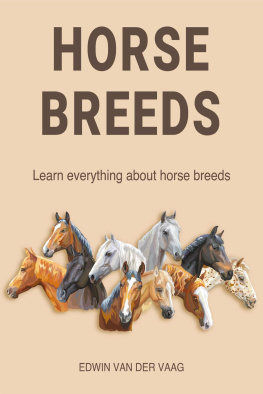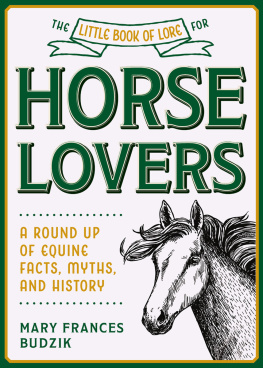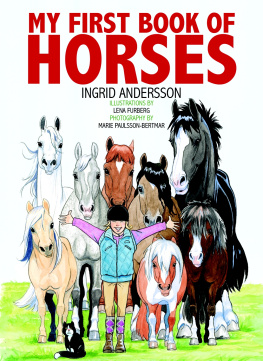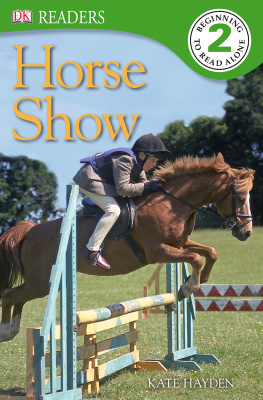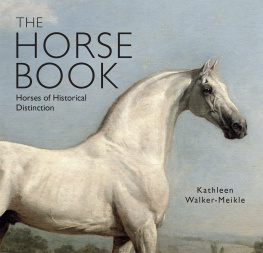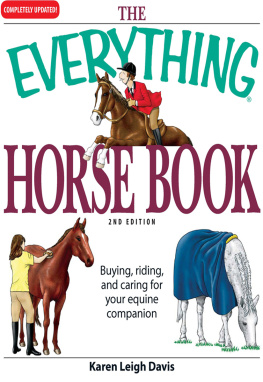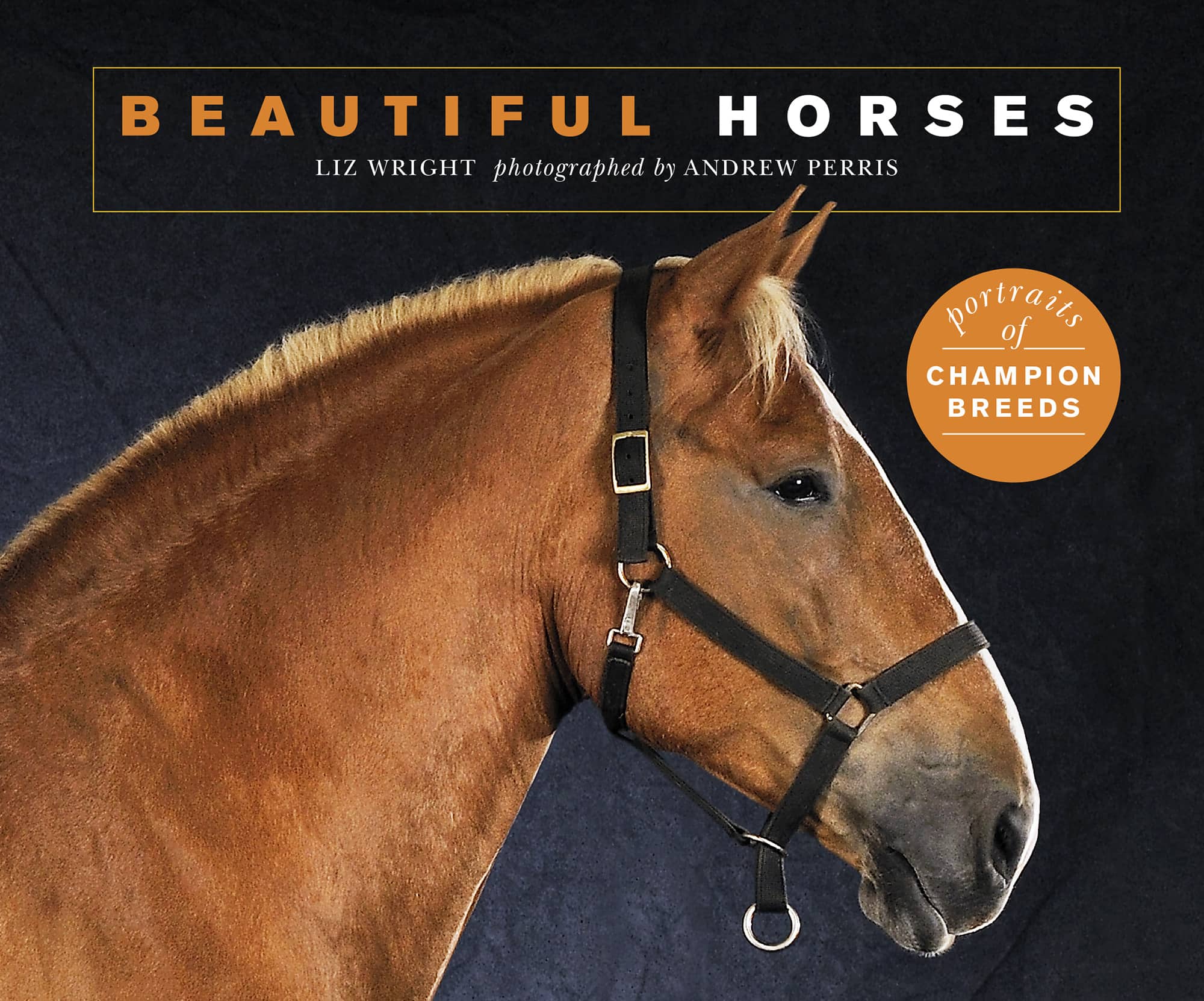T HE HORSE HAS PLAYED AN ENORMOUS PART in human civilization and been an invaluable companion to us for thousands of years. From early man, who used the horse as a pack pony, to modern humans who developed it as a warhorse and were totally reliant on its strength as a workhorse, it is impossible to overestimate the importance of this animal in the development of human history. Although mechanization has now taken over many of the horses traditional roles, it is still a crucial working animal in some areas.
As well as their more utilitarian uses, horses have long been popular for leisure and sport. Horse racing has been enjoyed for thousands of years and disciplines such as show jumping, eventing, and dressage are also well established. New sports such as horseball are developing and gaining momentum. The diverse range of modern breeds means there is a horse perfectly suited to each discipline, from the diminutive Shetland ponyan excellent choice for fast obstacle (scurry) driving, to the Thoroughbred, whose breathtaking speed is much in demand for racing.
As diverse as horse breeds are, they all have one thing in commonthey are all beautiful, with their own unique qualities. Championship shows celebrate the beauty and unique defining characteristics of each breed, with horses presented in the show ring for judging, having been painstakingly prepped for their moment in the limelight. Our photographer visited one such show to capture the stunning images in this book, revealing the spirit and elegance of each of the animals.
The photographs are accompanied by concise information on the defining characteristics of each breed, as well as its past and present place in human life, details of how it developed, and its relation to other breeds. Origin and distribution information shows where each breed hails from, and how far it has now spread.
The horses in this book come in all shapes, sizes, and colors, but one thing is for suretheir owners all prize them. The uses of the horse may have changed over the centuries but its future seems in no doubt with so many people devoting their lives to the care and enjoyment of these beautiful animals.
The relationship between people and horses goes back thousands of years and is still going strong today.
HORSES IN CIVILIZATION

H UMANS HAVE HAD A VERY LONG ASSOCIATION with the horse. For 4,000 years, this animal has provided power and speed, and also has acted as a symbol of strength. The horses earliest ancestor, Eohippus, which lived some 55 million years ago, was about the size of a modern-day hare, but over time evolved into the horse we know today.
It is thought that todays horses and ponies originated from three distinct types that were shaped by the different environments they evolved in. Cave paintings from around 2500 BCE have helped us understand what they looked like. The three types were the primitive Asiatic wild horse, known as the Steppe (still extant but mainly in captivity as the Przewalski horse); the slow, heavy breed type from northern Europe, known as the Forest; and the finer Tarpan from eastern Europe, also known as the Plateau.
It is thought the first horses were domesticated by nomads who used them not for riding, but for carrying goods and also for meat. Mesopotamia provides one of the first records of the use of horses in 2000 BCE, with records and paintings of chariots. The earliest horse breeders to have left records were the Assyrians, who bred horses strong enough to carry warriors clad in heavy armor, beginning the ongoing quest to breed bigger and stronger horses. By 2,500 years ago, the people of Persia were breeding horses that are thought to be the ancestors of todays Arab horses.
Continuing the quest for greater size, the Forest breeds were used to produce heavyweight chargers for such peoples as the Goths who lived in modern-day northern and eastern Europe some 1,750 years ago. By the time of the Roman Empire, the use of horses for warfare, sport, and draft was commonplace. As armies moved across countries and continents they brought their own types of horse with them, influencing local breeds.
As well as their uses in war, horses have played a crucial role in hunting, transport, and agriculture through the centuries. The horse was at the peak of its popularity as a working farm animal in the early 1800s, but since mechanization it has carved out a new niche as a sports, leisure, and companion animal.
Prehistoric rock paintings in the Bhimbetka caves, a World Heritage Site in India, show men out hunting on horseback.
THE DEVELOPMENT OF BREEDS

O NCE HUMANS STARTED TO HERD HORSES and use them in combat, distinct breeds began to develop. A breed is essentially a response to a needeither the need of that horse to make the most of its surroundings, such as the hardy native ponies, or for man to refine the horse for his own uses, such as for strength, speed, or for elegance. Although most breed standards are now set, breeds still develop as requirements for sport, leisure, and companion animals change.
In the late 20th century there was a rise in the use of the warmblood horsedeveloped by crossing carriage-type horses with Thoroughbreds to produce a formidable sports horse, displaying great athleticism, courage, and stamina. Around the same time, the show pony stud book was established. The breed had started simply with native ponies being crossed with Arabs or small Thoroughbreds to produce childrens riding ponies with impressive movement for the show ring. More recently, the colored horses have been subdivided into types such as vanners and traditional gypsy cobs. Breeders are now also mating colored horses to Thoroughbreds, to produce a colored horse or pony that is athletic enough to take part in jumping and dressage competitions at a high level.
Around the world there are many breeds of horse and pony that have adapted to cope with the terrain where they live, as well as the needs of the people. The Fjord pony, for example, is thought to have been in Norway since pre-Viking times. Ideally adapted to the mountainous habitat, it is also the perfect pack pony. The Hanoverian horse has a more modern historyit was the result of the foundation of a state stud in 1735 by George II, Elector of Hanover and King of England. He aimed to provide local people with good stallions and brought in Holsteins, later introducing Thoroughbred blood to produce the athletic competition horse seen today.



